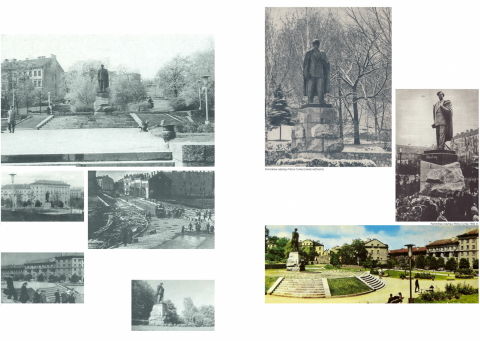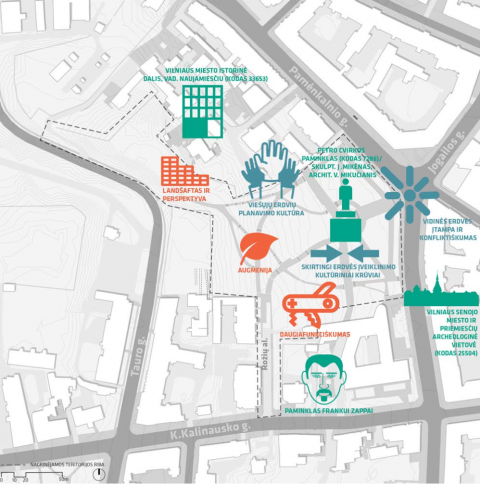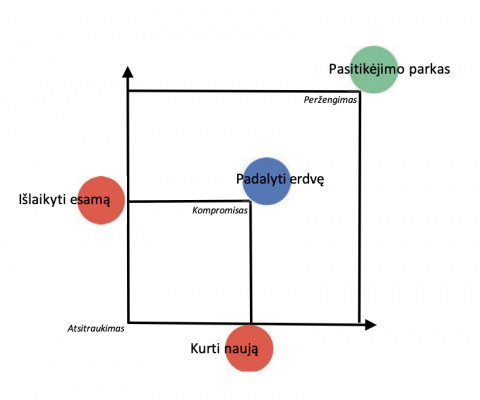P. Cvirka square transformation: value and impact
| Numbers | |
| 645 | thous. people directly involved |
| 47.5 | thous. vehicles per day |
| 70 | pct. of visitors are pedestrians |
P. Cvirka square is one of the central locations in the capital of Lithuania. It connects the Uptown with the Oldtown and serves as the gateway for many daily commuters. With a gradual infrastructure upgrade in the city this square was next in line to be transformed.
As all infrastructure objects are at the same time functional solutions and socio-cultural domains they have to be addressed in that way.


When the area is out of the spotlight usually nobody cares to focus on the context and works only on functionality. This pattern of actions results in unsustainable creations debilitating cities and people within.
P. Cvirka square has been on the spotlight due to its historical relationship with the Soviet Union in terms of the structural relevance and the identity of the writer to whom the area was dedicated to. The conflict is multidimensional, which makes any decision very complicated.
Identifying a proper approach to the situation means looking towards the horizon of a concrete problem. This invited us to explore the infrastructural problem through a conflict transformation method. Our team applied the J. Galtung “Transcend and Transform” structure to wrestle with the circumstances.
Firstly, we analyzed four key cultural elements defining the context:
Planning culture - taking into account the need for a dialogue between the stakeholders to facilitate the process of transforming public spaces of the city.
Site-specific culture - the square reveals itself in a historical and landscape way of being. People recognize it as a green area to hangout and asn a relict of the Soviet times. Nevertheless, the want to contextualize the historic memory is present in the minds of citizens.
Contradicting perspectives - the square is interpreted either as an important cultural heritage or as a significant ideological manifestation. These two logics are operating with different symbols and are nested in different values.
Internal territorial tensions - the space is a condensation of various conflicting situations: the crossroad is overwhelmed with different means of mobility; the crossing time for pedestrians is very short; the calm greenery is confronted with a party-oriented area; the health institution is directly on one of the most CO2 induced streets.
Our team put the contextual information on the conflict framework and identified the most integral direction of moving forwards. It was apparent that (1) keeping the square as it is now is not an option in the same way as (2) creating something totally new. To somehow entertain the idea of (3) dividing the area was also a compromise where everybody loses.

Therefore, the solution of transcending the problem was to focus on forming a park based on trust.
Trust building has the core structure. Adapting it means interpreting context to reveal the principles defining that structure (vulnerability, familiarity, openness, consistency). Our team distilled actions needed to transform P. Cvirka square:
Vulnerability - reveal the weak aspects of the project publicly to invite a dialogue with the stakeholders in a search for a sustainable solution.
Familiarity - cultivate various culture elements within the area to make it more human and wanting to interact with.
Openness - facilitate tensions arising from the square theme and include them into the city planning procedures.
Consistency - make the square practical and useful for everyday people to enjoy it throughout the space.
Transforming P. Cvirka square to a park based on trust creates a space for a dialogue between oneself, people and municipality.
This dialogue is an impactful way to move towards a welfare city. The next stage for the transformation will be organizing a series of public workshops to develop different scenarios of a change.